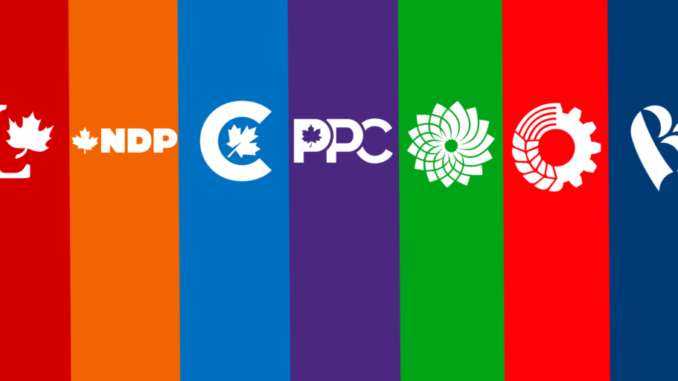
Gurpreet Singh
If we take a look at real time provincial popularity, Prime Minister Justin Trudeau’s Liberals leading in Atlantic with nine points from Conservatives. In Quebec, their support remains ahead by six points from Bloc. Only 19 per cent from Quebec support Conservatives and for NDP it is just eight percent. In Ontario Conservatives get 36 percent support, seven points ahead of Liberals and ten points ahead of NDP. In the prairie provinces of Manitoba and Saskatchewan Conservatives are ahead with 47 points, NDP standing at second place with 23 points and Liberals got 19 points. Maxime Bernier’s PPC only got nine points.
The chart below displays the impact young voters have on the results of an election. Today, individuals between 18 and 34 share important political characteristics and prefer an NDP government. Canadians aged 55 and above are likely to identify between the Conservative or the Liberal Party or even lean toward one. At the same time, among those who do identify with or lean toward one of the two major parties, there is a double-digit Democratic advantage among those at each age point from 18 to 35. These are in fact the only ages -- across the entire age spectrum -- at which Democrats hold a 10-point or higher advantage.
Prime Minister Justin Trudeau is still the most searched political face in overall Canada. He is most searched in Northern Canada and with more than 85 per cent. Followed by in Quebec, British Columbia, Ontario and across prairies with more than 70 percent. Trends also shows that his popularity lies in between 60 - 70 percent in Atlantic Canada.
Despite of all the data and social experiments one which stood out is the nation-wide winning chances. In a recent poll conducted, 33 percent of participants that they would vote for Conservative and only 30 per cent would vote for Liberal if elections happening today. This is the fourth consecutive poll since Conservatives got lead and Pierre Poilievre became the party leader. Both parties gain some support as NDP stands at 21 percent from 19 percent in November and People’s party is at four percent. Support for Bloc Quebecois and Green Party held at seven percent and four percent respectively. The poll conducted from December 9 to December 11 last year and was based on 1526 Canadian picked randomly.
So even though Pierre Poilievre and his Conservative Party are leading the polls in three western provinces and Ontario, Prime Minister Justin Trudeau is a far more popular search topic. Trudeau leads in Google searches almost everywhere in Canada except for The Yukon. There is no available data for the Northwest Territories and Nunavut.

Be the first to comment